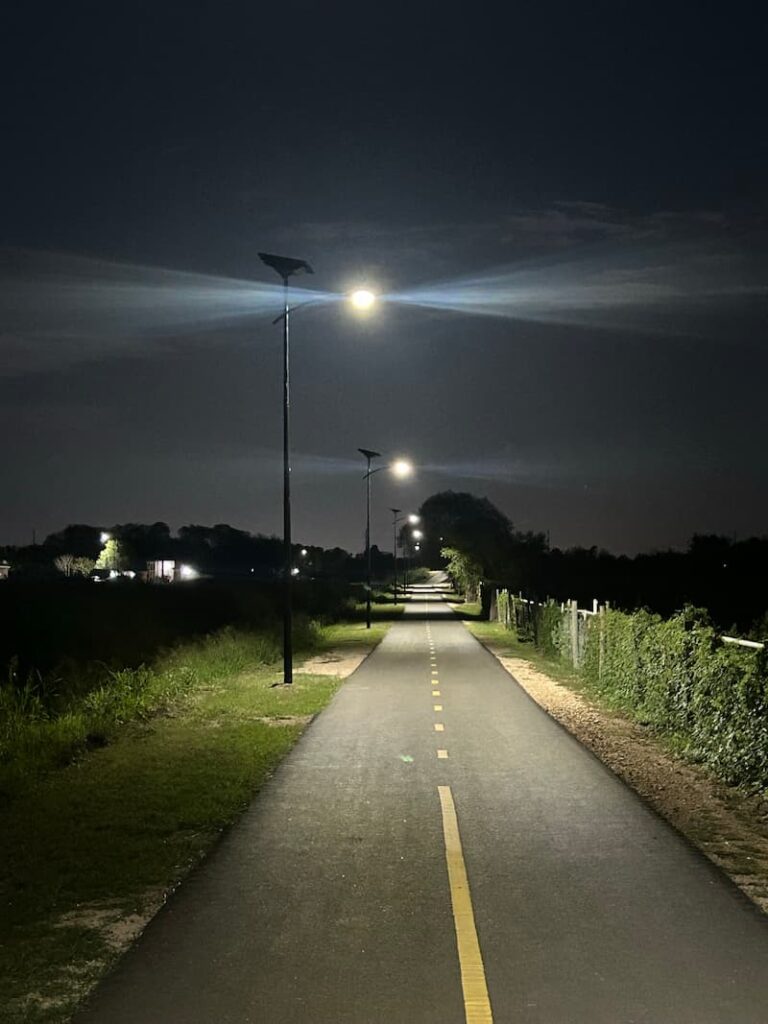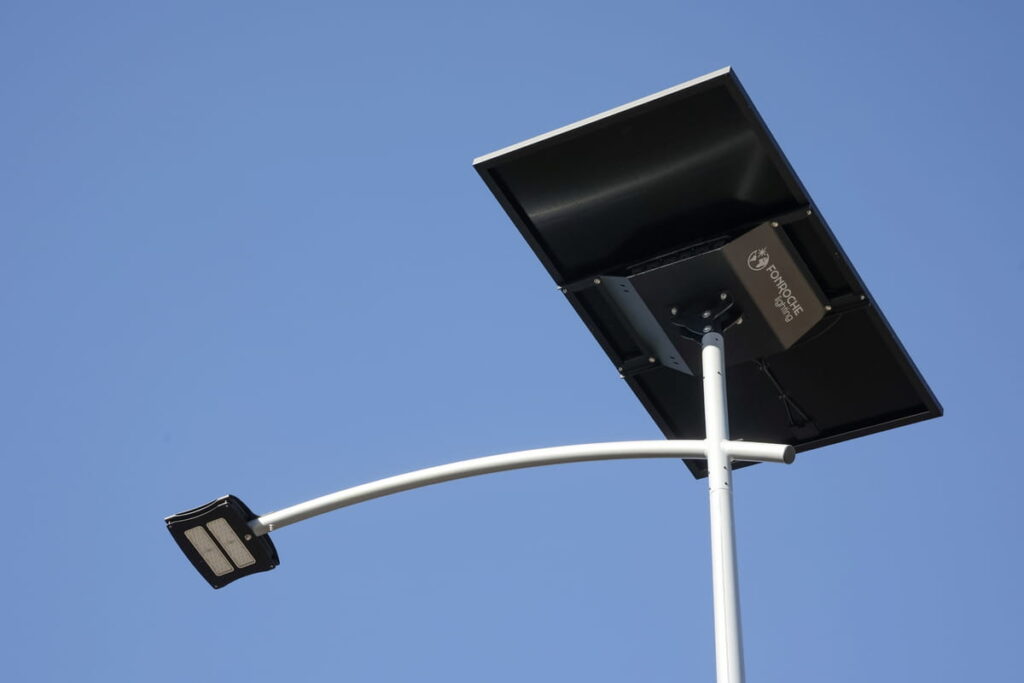Explore how solar-powered lighting and other eco-friendly solutions can transform urban areas and communities into greener, more sustainable environments.
As cities and neighborhoods around the globe continue to evolve, the push for greener, more sustainable living environments has never been more critical. With the effects of climate change becoming more pronounced, many urban planners and community leaders are searching for innovative ways to minimize their environmental impact. Sustainable practices not only make cities more livable but also contribute to healthier, happier communities. Here are five practical strategies to help city planners and neighborhood leaders create greener spaces that benefit residents and the planet alike.
1. Embrace Green Building Practices and Eco-Friendly Materials
Designing for sustainability: How green building materials can reduce environmental impact.
Green building practices are an essential cornerstone of sustainable development. These practices aim to minimize the ecological footprint of construction by focusing on reducing waste, conserving energy, and using renewable materials. Green building methods take into account the location, energy efficiency, and overall environmental impact of construction projects.
Eco-friendly materials, such as bamboo, recycled steel, cellulose insulation, and clay bricks, play a significant role in reducing the environmental impact of new structures. For example, bamboo grows rapidly and is highly renewable, while recycled steel reduces the need for raw material extraction, cutting down on resource depletion. Using sustainable materials not only helps reduce the embodied energy in buildings but also supports the circular economy, where materials are reused and recycled instead of discarded.
Moreover, the integration of energy-efficient systems like solar panels, rainwater harvesting systems, and natural ventilation can significantly decrease a building’s carbon footprint. Cities can adopt green building codes to encourage or even mandate the use of these practices in both public and private sector construction projects, making urban areas more sustainable.
2. Promote Active Transportation, Especially Bicycling
Cycling as a sustainable transportation solution: Benefits for health, environment, and urban mobility.
Reducing reliance on motor vehicles is key to creating greener cities, and one of the most effective ways to achieve this is by promoting active transportation like bicycling. Encouraging people to cycle, walk, or use other non-motorized forms of transport can dramatically reduce greenhouse gas emissions and pollution levels in urban areas.

City planners can take steps to make bicycling a more attractive and viable option by building dedicated bike lanes, offering bike-sharing programs, and creating safe multi-use paths that allow cyclists and pedestrians to travel safely. Additionally, offering incentives for residents who cycle to work, school, or for leisure—such as tax breaks or discounts on public transportation—can help drive adoption.
Cycling infrastructure not only benefits the environment but also improves public health by promoting physical activity. By creating a bike-friendly city, municipalities can reduce traffic congestion, improve air quality, and encourage a healthier lifestyle for residents, making cities more livable and eco-friendly.
3. Increase Green Spaces: Plant Trees, Gardens, and Parks
Why urban greenery matters: Trees and gardens can transform city landscapes and improve environmental health.
One of the simplest and most effective ways to create a greener neighborhood is to increase the amount of green space by planting trees, gardens, and other vegetation. Green spaces improve air quality by absorbing pollutants and carbon dioxide, reduce the urban heat island effect, and provide habitats for birds and other wildlife. Parks and gardens also offer residents natural spaces to relax, exercise, and connect with nature, contributing to both physical and mental well-being.
Planting trees along streets and in public areas can significantly reduce energy costs by providing shade and lowering the temperature in urban environments. They also help in managing stormwater runoff, acting as natural barriers that reduce the risk of flooding. Municipalities can work with local communities to identify areas that would benefit from more greenery and plant a diverse range of species to enhance biodiversity.
By prioritizing urban greenery, cities can reduce their carbon footprint, improve public health, and foster a sense of community among residents.
4. Reduce Waste Through Recycling, Composting, and Reusing Materials
Less waste, more green: How waste reduction initiatives can create cleaner, more sustainable communities.
Waste reduction is a critical aspect of creating greener cities and neighborhoods. Reducing the amount of waste that ends up in landfills helps minimize harmful emissions, lowers transportation costs for waste management, and conserves natural resources. Implementing comprehensive waste reduction programs, such as recycling and composting, is an effective way to decrease the environmental impact of waste.
Cities can encourage residents to recycle materials like paper, plastic, glass, and metal while promoting the composting of organic waste, such as food scraps and yard trimmings. Composting programs not only reduce landfill waste but also create nutrient-rich soil that can be used in community gardens and public parks.
Moreover, municipalities can promote reuse by organizing “swap meets” or community-based initiatives where residents can exchange or donate items they no longer need. By fostering a culture of reuse, cities can significantly cut down on waste while supporting the local economy and reducing the demand for new materials.

5. Install Solar-Powered Street Lights
Shining a light on sustainability: How solar-powered lighting transforms cities and neighborhoods.
As cities seek to reduce their reliance on fossil fuels, solar-powered street lighting has emerged as a practical and energy-efficient solution. These lights use renewable solar energy to power street lamps, parking lot lights, and general area lighting, offering significant cost savings on electricity and reducing carbon emissions. Solar-powered lights are particularly valuable in areas without existing electrical infrastructure, providing an affordable way to light up streets, parks, and walkways.
By installing solar lighting systems, municipalities can improve safety and visibility for residents, pedestrians, and drivers without incurring high energy costs. Solar-powered lights also require less maintenance than traditional lighting systems, saving cities time and money over the long term.
In addition to cost savings, solar-powered lights contribute to a city’s sustainability goals by harnessing clean energy from the sun. Implementing these systems in public spaces, such as parks and streets, is a visible and impactful way for cities to demonstrate their commitment to a greener future.
Take Action Today for a Greener Tomorrow
Creating greener cities and neighborhoods is a vital part of building a sustainable future. From adopting eco-friendly building practices to installing solar-powered street lighting, there are many ways for municipalities to reduce their environmental impact. Fonroche Lighting America is committed to providing innovative solar lighting solutions that help cities improve their sustainability while enhancing public safety and reducing costs. By making the switch to solar-powered lighting, you can play a pivotal role in creating a cleaner, greener, and more livable environment for generations to come.
Contact Us Today

